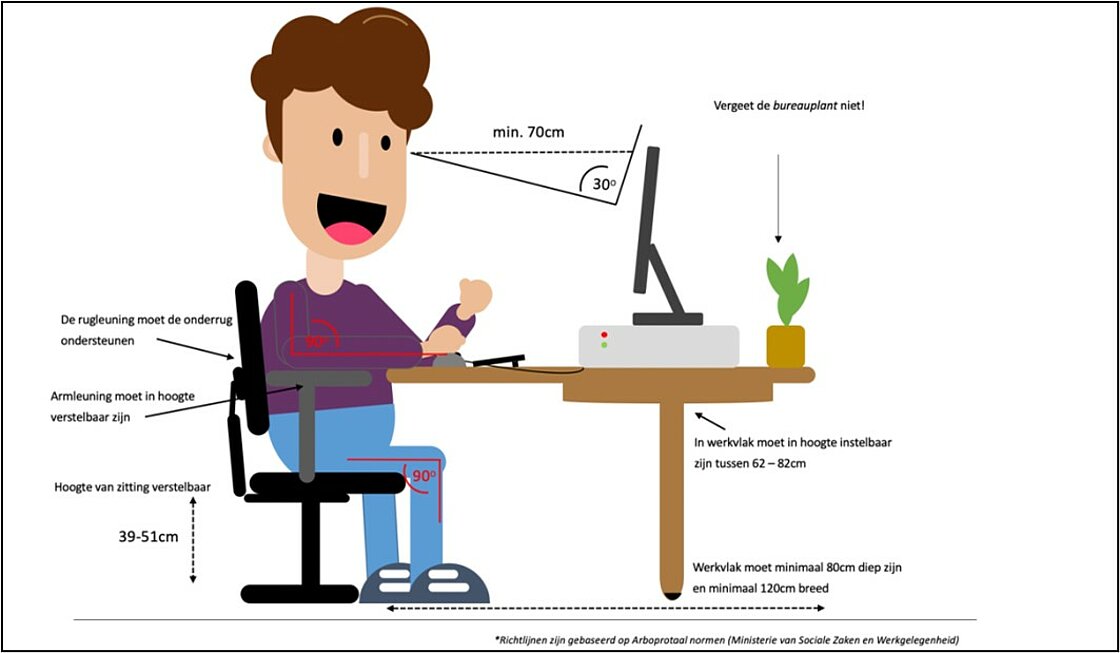
Sitting posture
Avoid a lot of sitting and when you do make sure that you stand up every 30 minutes and move around. When sitting down, try to set up your workplace ergonomically using the tips below.
1. Seating height
Adjust the height of the chair so that you can plant your feet flat on the ground while the angle of your knees is 90 degrees or just over. Many people adjust their seats too high.
2. Seat depth
Make sure you always sit well against the backrest. And that there is a hand width space between the hollow of your knee and the seat.
3. Backrest
Adjust the backrest so that the underside of your back supports your back at waist belt height.
4. Armrests
Make sure your arms are relaxed along your body, resting on the armrests at an angle of 90 degrees (elbow angle).
5. Desk height
Adjust the height of your desk so that the top is at the same height as the armrests (with your arms at a 90 degree angle). Always adjust your office chair first and then adjust your desk.
6. Screen
The top of your screen should be at eye level. The viewing distance must be at least an arm's length (more than 70cm and a maximum of 100cm).
7. Document holder
Your documents and document holder should be in front of you, between your screen and your keyboard.
8. Keyboard and mouse
Put your keyboard and mouse right in front of you. Keep your work surface compact (primary work surface at shoulder width) and avoid reaching unnecessarily (to your mouse or e.g. a phone).
Working with a laptop
Make sure you put some thick books under your laptop so that the screen is at eye level. This means you'll need an extra keyboard! If this is not possible, limit working behind your laptop to a maximum of 120 minutes at a time.
Working from home
When working from home, it is especially important to consciously take several breaks. At your normal workplace, you are used to getting coffee or greeting colleagues. This is not the case when working from home. This is why you should consciously take several breaks to get up and get moving.


What else is important while sitting down?
- Prolonged sitting is not recommended. If this is unavoidable at certain times, it is important to change your sitting posture regularly. This will allow your back to move a little.
- Driving a car is an example where you are forced to sit for an extended period of time. It is best to tilt the car seat backwards a little. In this way, the weight of your upper body is not carried by your lower back, but by the car seat.
Author: Frank Bauman, Fontys programme manager Move to Health project employee Fontys Vitaal & Nina de Rooij, PSV lifestyle coach
